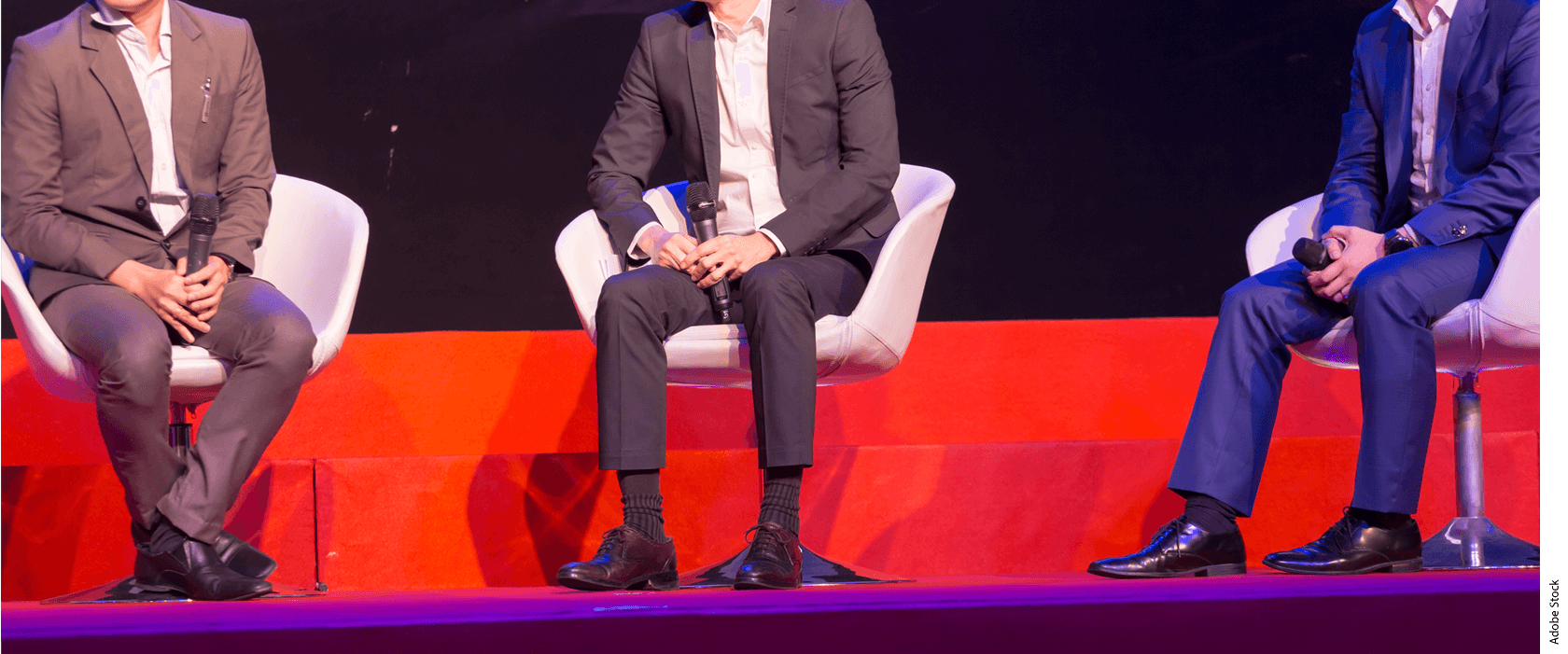
Last week I got to attend one of the nation’s premiere education gatherings, the celebrated North by Northwest gathering in Hudson, New York. Ed tech visionaries, celebrated funders, and “rock star” reformers gathered to share kind words about one another and enjoy those little salads with pine nuts and spinach leaves.
Well, no panel had more star power or drew a more enthusiastic audience than the keynote featuring two of our era’s towering eduthinkers: 22nd-century Skills guru (and former vacuum salesman) Paul Banksley and “actionizing thinkiness” impresario Tait Smoogen of the Extraordinary Learning Foundation. It sounds like a humblebrag to mention it, but I got asked to moderate this pairing of titans. Now, they dropped too many pearls of wisdom to possibly recall them all, but I do want to share some highlights.
I kicked things off by asking if they could share just a few thoughts on why their work has been so impactful.
Tait Smoogen mused for a moment. “I think it is all about relationships and connection,” he explained. “And engagement. Yes, relationships, connection, and engagement. And kindness. Yes, relationships, connection, engagement, and kindness. And . . .”
Banksley jumped in. “For me, it all comes back to words. As a salesman, it’s about teaching the customer to want more. If they’re satisfied with 21st-century skills, it’s probably because they haven’t considered the 22nd-century alternatives. If they’re happy with fourth-wave cognition, I’ll bet they don’t know there’s a fifth-wave option. And I know the importance of relentlessly focusing on that north star: for a school reformer like me, that means always asking, ‘What do foundation executives want to hear next?’”
“Good point,” Smoogen interjected. “Which industrial revolution are we up to now? Is it the fourth, fifth, sixth?”
“Such a great question,” Banksley said. “Why don’t we call it 6.5?”
Smoogen nodded, “That sounds very funder-worthy.”
Feverish snapping swept the room.
I was so busy fanboy-ing, I almost forgot to ask the next question. “Tait,” I said, “You’ve often noted how you try to hook learners with the nounification of verbs or the verbification of nouns. Can you say a bit more about why that’s so powerful?”
Smoogen tented his hands for a moment and then offered, “Let me put it this way. At the Extraordinary Learning Foundation, we know that Extraordinary LearningTM needs an extraordinary vocabulary. Take ‘learning’, which is usually a verb. What about turning it into a noun such as in, ‘What learnings have we taken from today?’ That’s just an obvious example, but we can also introduce new words entirely. Instead of simply ‘thinking’ about something, we can make it more engaging and potentially subject to the Trademark Act of 1946 by promoting ‘thinkiness.’ That’s how the Actionizing ThinkinessTM strategy was born.”
“And that’s why I’m Tait’s biggest fan,” said Banksley. “The guy is an inspiration.” There was a thunderous wave of snapped agreement.
I brought up the question of expiring federal pandemic funds, asking Banksley for thoughts on what schools should do now.
“I think it’s crucial that schools recommit to using the right words,” he said. “School improvement plans need to be about co-creating equitable and dynamic learning environments. They need to promote innovative partnerships to advance social justice and cultivate the opportunity to thrive. Far too many plans leave out some of these words. And schools must seek out vendors as committed to the words as they are.”
“Co-construction is key,” agreed Smoogen. “It’s essential that we co-create environments with all stakeholders so that all learners’ perspectives are valued, honored, and allowed to collaboratively deliver, via rounded and inclusive partnerships, the development and progression and construction of co-constructed objectives and aims.”
He paused before adding, “In practical terms, this requires meetings. Lots and lots of meetings.”
“With slide decks,” added Banksley. “And consultant-supported strategic planning.”
This time, the snapping echoed off the walls.
I asked about their take on the state of education research. “What kind of research makes a difference?”
“Well, first and foremost, research needs to provide the results we want to see,” said Paul. “There was this terrific study I read about in The 74 recently. A professor did a half-dozen virtual focus groups with almost two dozen school nurses in Minnesota in 2020, and he’s just reported some powerful stuff. The nurses told him that, with more money, they can get kids to school and be difference-makers. Reading that, I thought, ‘Right on! That’s change-making research right there.’ And I know it’s careful because it took him four years to share his findings.”
Subscribe to Old School with Rick Hess
Get the latest from Rick, delivered straight to your inbox.
I closed the session by asking if they had any tips for edupreneurs in the audience. Smoogen took the first swing and hit it out of the park.
“For me, it’s crucial to wrap words up in proprietary concepts. Take my four learning limbs idea. Imagine a hog. The head of the hog represents curiosity because it’s got eyes and ears. The legs represent struggle because they are the base of all learning—it used to be ‘grit’, but that’s so 2017. The arms represent adaptability because arms are adaptable. And the torso, well, it represents creativity because that’s what’s left over. Four learning limbs and a colorful PowerPoint slide. Simple. Then, when a district buys a use license, teachers can ask questions like, ‘What learning limb did you use to solve that math problem?’ and then spend class talking about that rather than math which, let’s face it, can be really boring.”
Banksley paused for a moment before answering. He kept it short and sweet. “Remember,” he said, “an innovation is just an old idea that hasn’t been funded lately.”
No snapping this time. There are times when the presence of genius simply commands silence.
Frederick Hess is an executive editor of Education Next and the author of the blog “Old School with Rick Hess.”



